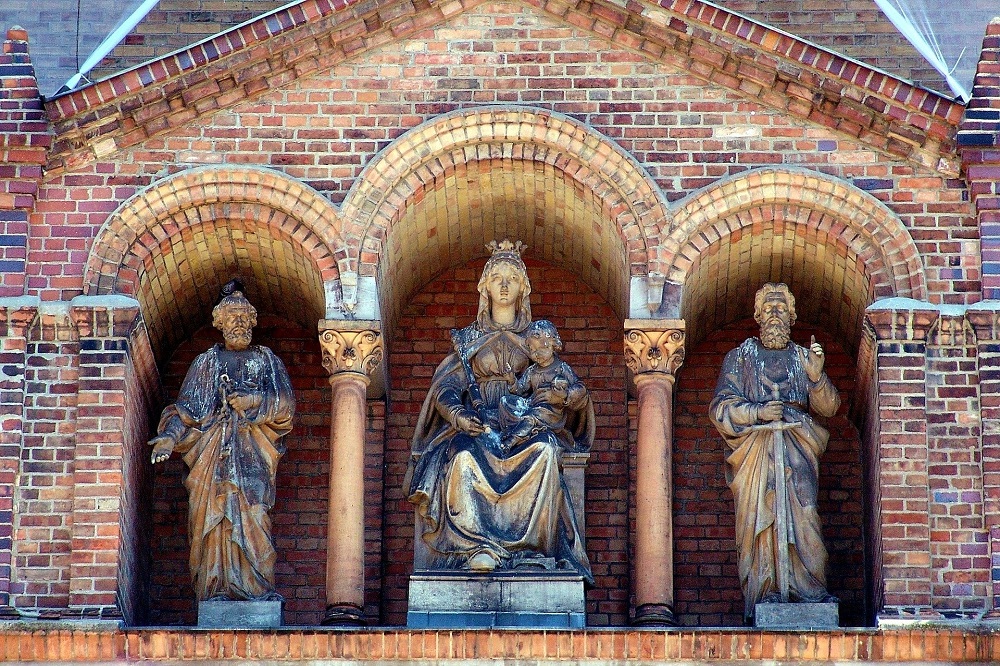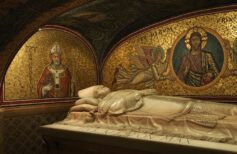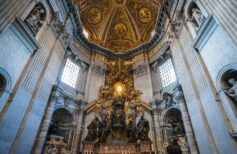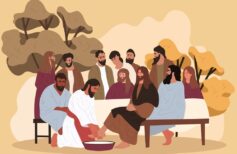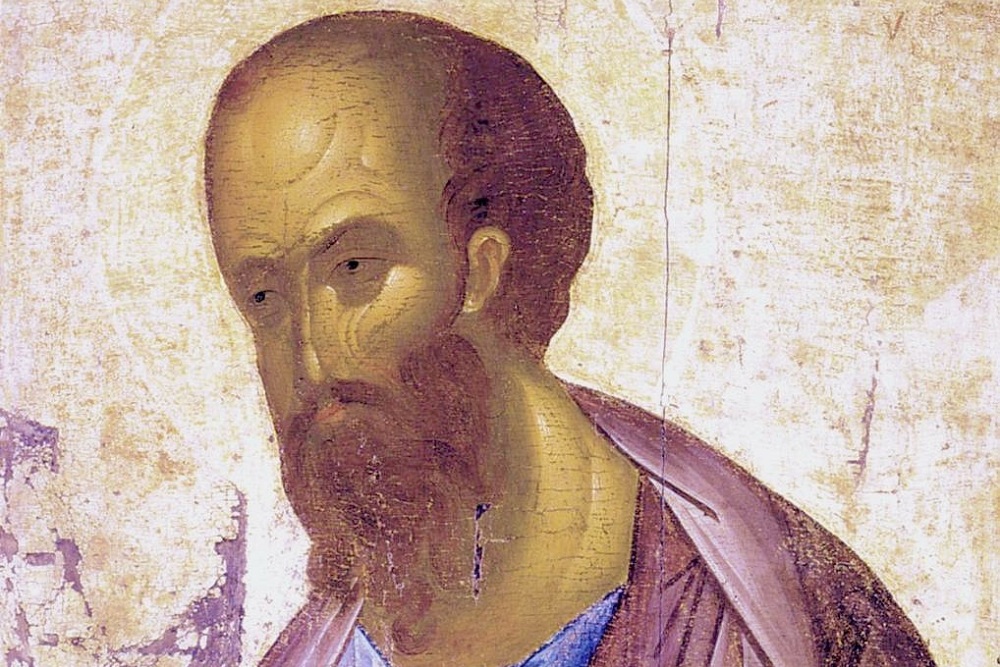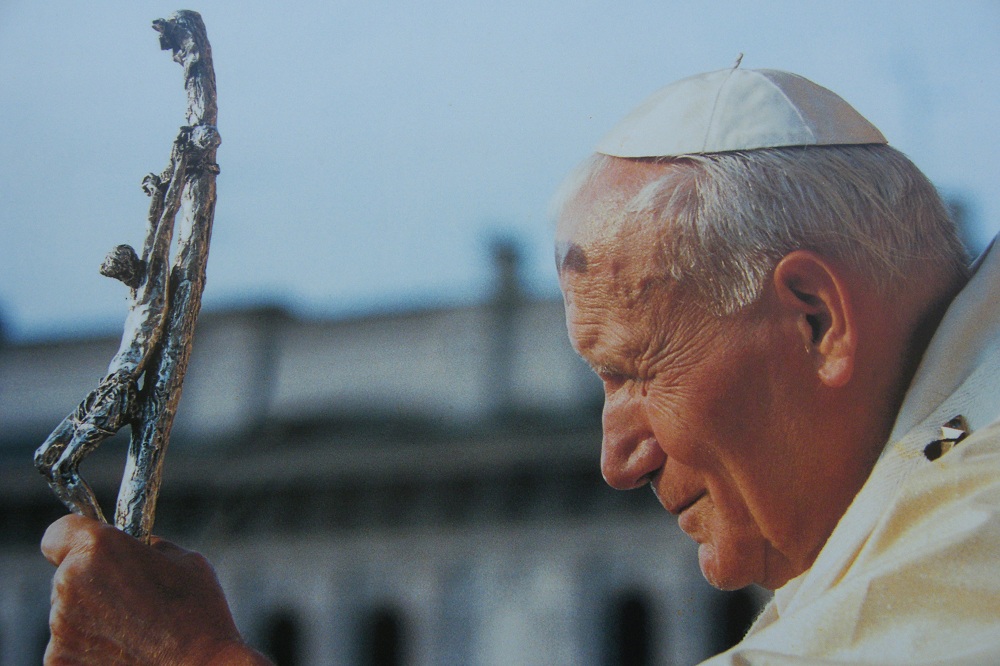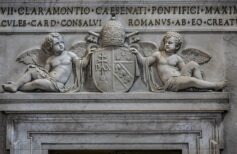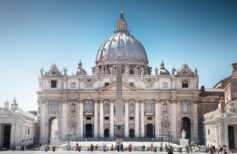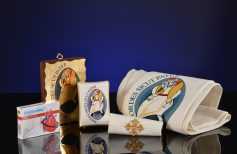On June 29, Saint Peter and Paul are celebrated. Two apostles, two very different men, both fundamental to the history of the Church. Let’s get to know better these two examples of faith and their feast.
Contents
It is difficult to think of two men more different from each other in history and vocation than Saint Peter and Paul were. Yet, not only are they both remembered as two bulwarks of faith, and symbols of the Catholic Church itself, but they even share the same feast, June 29.On that date, in 67 A.D. Saint Peter and Saint Paul were martyred in Rome during the persecutions ordered by the emperor Nero against the Christians. This according to the Roman Martyrology, the Sinassari of the Eastern Churches (collections of lives of saints) and the Decretum Gelasianum, a document of the fifth century that contains several lists of religious material, from written texts to be recognized or rejected, to the list of synods.
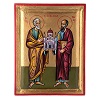
Although it is almost certain that both Peter and Paul suffered martyrdom by the will of Nero, the first crucified upside down, the second beheaded between 64 A.D. and 67 A.D., the fact that the two killings took place on the same day of the same year is highly unlikely.
It is more plausible that the choice to commemorate the death of both Saints Peter and Paul on 29 June derives from the desire to convert a pagan feast into a Christian celebration, as has happened over the centuries for many other religious holidays. In fact, June 29 coincided with the feast of Romulus and Remus, founders of Rome. Christians have probably wished to pay homage to the two founders of the Church on that same day, as if to celebrate the birth of a new Christian Rome.
We know better Saint Peter and Paul and their common destiny.
The Story of Saint Peter, the men’s fisherman
Simon, who changed his name to Peter when he decided to follow Jesus together with his brother Andrew, was the first of the disciples to recognize Jesus as the Messiah and Son of the living God.
13 And when Jesus came to Caesarea Philippi, he asked his disciples, «Who do men say that I, the Son of Man, should be?». 14 And they said, «Some, John the Baptist, others Elijah, others Jeremiah, or one of the prophets». 15 He said to them, «And you, who do you say that I am?». 16 And Simon Peter answered and said, «You are the Christ, the Son of the living God». (Matthew 16,13-16)
Likewise, and on the same occasion, Jesus himself designated Peter as His successor, the foundation of His Church and the leader of God’s flock:
17 And Jesus answered and said to him, You are blessed, O Simon, son of Jonah, because neither flesh nor blood have revealed this to you, but my Father who is in heaven. 18 And I also say unto you, that thou art Peter, and upon this rock I will build my church, and the gates of hell shall not overcome it. 19 And I will give you the keys to the kingdom of heaven; all that you have bound on earth will be bound in the heavens, and all that you loose on earth will be loosed in the heavens». (Matthew 16,17-19)
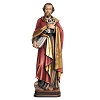
This is exactly what happened after Jesus’ death. Peter, who had three times denied his Master after his arrest, became the point of reference for the other apostles, and for all the disciples. He will be the one to initiate the preaching of the Good News, after the descent of the Holy Spirit on all of them at Pentecost. He will be the one to assume in his own hands all the duties of the Vicar of Christ on Earth.
Speaking of how Peter denied Jesus we cannot fail to dwell on his weakness, on the flaws that make him a human being among human beings. It is incredible to think that this man whom Jesus called of little faith, when he did not believe he could walk on water to reach it (Matthew 14:22-36), will become the very foundation of the Christian Faith and the stable and cohesive rock on which the Church will be founded!
Yet, this was Peter before he was what Jesus asked him to become. A man, a fisherman who threw his nets into the sea of Galilee, and who awaited the coming of the Messiah preached by the prophets, and declared imminent by John Baptist. To him Jesus asked to be able to get on his boat to preach, and, blessed by a miraculous catch, Simon decided to leave everything, even his own name, and to follow Jesus proclaiming himself a fisherman of men.
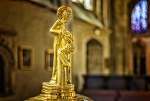
24 June Saint John the Baptist
On 24 June we celebrate the birth of Saint John the Baptist, one of the most venerated Saints in the world, the last prophet of the Old…
Peter also witnessed the Transfiguration of Jesus, together with James and John.
Ardent and impulsive, Peter expected a Messiah who would be a spiritual guide, but also a warrior, a conquering King who would break the yoke of Rome. The personality and charisma of Jesus, however, conquered him completely. Even at the moment of the latter’s arrest the ancient ardor of Peter re-emerged, prompting him to hold his sword against the guards who came to take Jesus away and to strike one with the sword. This will not prevent him from denying him three times, an act he will bitterly regret.

The transfiguration of Jesus Christ
On 6 August the Transfiguration of Jesus is celebrated, forty days before the Exaltation of the Holy Cross, the commemoration of the Crucifixion…
To Peter who came on Easter morning to the tomb of Christ found empty by the women, Jesus appeared before the others, and from this moment on the Acts of the Apostles and the sacred texts bring us continual confirmation of the role fully embraced by the Apostle.
On Pentecost day, while the Holy Spirit descended in tongues of fire gave the disciples the ability to speak in all the languages of the world, Peter will enrich the crowd, troubled and frightened by declaring Jesus Lord and Messiah, resurrected from the kingdom of the dead and ascended to heaven, to perform that miracle. His speech will prompt many of those present to convert and ask for Baptism, and thousands will come in the following days for the same reason.
On the same day, Peter’s preaching of the Good News began, leading him to be arrested several times by the Jews and the Romans. In particular we remember the arrest by King Herod Agrippa, to whom the apostle would have fled thanks to the intervention of an angel.
His travels will take him to Rome, where he will meet his destiny by the will of Nero.
Legend has it that while he was trying to escape from Rome to escape arrest, Jesus appeared to him. The apostle asked him: “Quo vadis? (Where are you going?)” and the Lord answered him that he was going to Rome to die again. Then Peter went back on his way, let himself be arrested, and accepted martyrdom. The choice to die crucified upside down was Peter himself, who did not consider himself worthy to die as his beloved Master. He was buried on the Vatican Hill, and around his tomb, in time, the Basilica of San Pietro was erected, which still houses his tomb.
History of Saint Paul, apostle of the Gentiles
Paul was called Saul of Tarsus before he converted. He never knew Jesus, but is remembered as His first missionary, the supreme preacher of His Word to Hebrews, Greeks and Romans, the so-called ‘gentiles’, in fact, understood as pagans, not Christians. It was thanks to him and to Saint Peter that the Gospel message spread throughout the Mediterranean kiss of that time. His exceptional writings make him the first theologian in the history of Christianity.

The differences between Judaism and Christianity
What are the differences between Judaism and Christianity? Is the God of the Jews the same as the Christians? Let’s try to discover together…
He was a Hellenized Jew, an aristocrat, a Roman citizen. A fierce supporter of Jewish traditions, he dedicated the first part of his life to persecuting Christians, whom he saw as a dangerous sect to eradicate by any means.
It was while he was carrying out his duty as an exterminator of Christians that he knew his destiny. In the Acts of the Apostles (Acts 9:1-9) we read how, on his way to Damascus to pursue a group of Christians who had fled from Jerusalem, Saul was struck by a dazzling light that made him blind. In the glow he heard a voice that said: “Saul, Saul, why do you persecute me?” (Acts 9:4). After that miraculous event, the man wandered for three days, arriving in Damascus, where he was welcomed and cared for by Ananias, head of the Christians of the city.
Thus took place his conversion and the beginning of his mission as a tireless missionary of Jesus.
Precisely from his conversion, Saint Paul will draw inspiration to begin his preaching. A hard mission, considering that everywhere we remembered his hatred of Christians. But Paul did not lose heart. Baptized by Ananias, and after living for some time in Damascus with the Christian community, he undertook several journeys. The tradition indicates three main missionary journeys: the first in the regions of present-day Turkey, on the island of Cyprus, in the city of Antioch and in Syria; the second in Greece; the third again in Asia. There was a fourth journey, which Paul undertook as a prisoner, to Rome. Here, the Acts of the Apostles interrupt the story of his life. He died beheaded during the persecutions organized by Nero. His remains still lie in the Basilica of San Paolo Fuori le Mura.
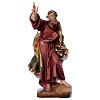
The testimony of his evangelical work remains, as well as in the chronicles and reports of the time, especially in his Works. We refer to the Letters he wrote to the Christian communities touched upon during his apostolic journeys or founded by himself. They have become part of the New Testament. In them Saint Paul makes himself the spokesman of God and of his promise of salvation. That salvation that had enlightened him first, snatching him from his old life and making him the most fervent of the apostles, though he never met Jesus in life.
“I have transmitted to you first of all what I myself have received: Christ died for our sins, according to the Scriptures, he was buried, resurrected on the third day according to the Scriptures, appeared to Cephas (Saint Peter), then to the twelve.” (First Corinthians 15:3 – 5).
Why are Peter and Paul celebrated together?
Leaving aside the tradition that wants them in Rome at the same time, and killed on the same day, we can recognize the traits that unite Saint Peter and Paul, these two men so different, and ensure that they are celebrated together, in their common will to spread the Gospel message and the legacy left by the human and mortal experience of Jesus.
If Peter was the “stone” on which the Church was built, as well as leading the flock of God, Paul was the most fervent preacher of the Word in the whole Mediterranean world, the first missionary in history.
There is also no doubt about the link between Saint Peter and Paul and Rome, where both died, but above all to the Christian rebirth of which both tended. In 2012 Pope Emeritus Benedict XVI declared them both “principal patrons of the Church of Rome”. Even today Rome remembers them with a great feast, during which an impressive fireworks display takes place, while Saint Peter is decorated with a magnificent infiorata, and the Pope gives a band of white wool (the palio), to the bishops of the city, before kissing the foot of the statue of Saint Peter that for the anniversary is covered with a red cloak.
Although different, although distant in history and experience, and despite having clashed with each other precisely because of these differences, Saint Peter and Paul are like complementary brothers, bound by the Gospel of which they were messengers and depositories. In the Discourses of Saint Augustine we read: “One day is dedicated to the feast of the two apostles. But they too were one. Although they were martyred on different days, however, they were one in Christ.”

Sant’Agostino d’Ippona: philosopher, bishop and theologian
Very few men of faith can be compared to Sant’Agostino d’Ippona. He was not only a great theologian and bishop, philosopher and doctor…
So two individuals that history is kept separate, that nature and nature have kept apart, have gathered together in Christ and for Christ.
The depiction of the embrace of Saints Peter and Paul
The Icon of Saint Peter and Paul represents them in the act of hugging. Perhaps it was with a hug that they greeted each other before being taken away by their executioners, according to tradition. But this embrace means much more than a simple greeting between two men who are the pillars of Christianity. It is a symbolic gesture that goes beyond the message of love promoted by Jesus, and rightly put into practice by his two closest disciples: “This is my commandment: that you love one another as I have loved you.” (John 15:9-17)
This ideal embrace symbolizes the union between two worlds, the pagan one, represented by the Gentiles to whom Saint Paul addressed, and the Jews, whom Peter continued to consider the chosen people. For Saint Peter it was not possible to embrace Christianity without first embracing Jewish culture and tradition, and the pagans could at most become second-class Christians, while for Paul only the message of Christ counted, went beyond the roots themselves, offering the possibility of a full and complete rebirth in His name.
Paul, however, always recognized the primacy of Peter, his authority as the head of the Church willed and elected by Jesus himself. Peter, for his part, despite the initial disagreements, recognized the value of Paul’s doctrine, and also in this complementary value from authority and doctrine we can read a further meaning in the embrace of the two apostles.

